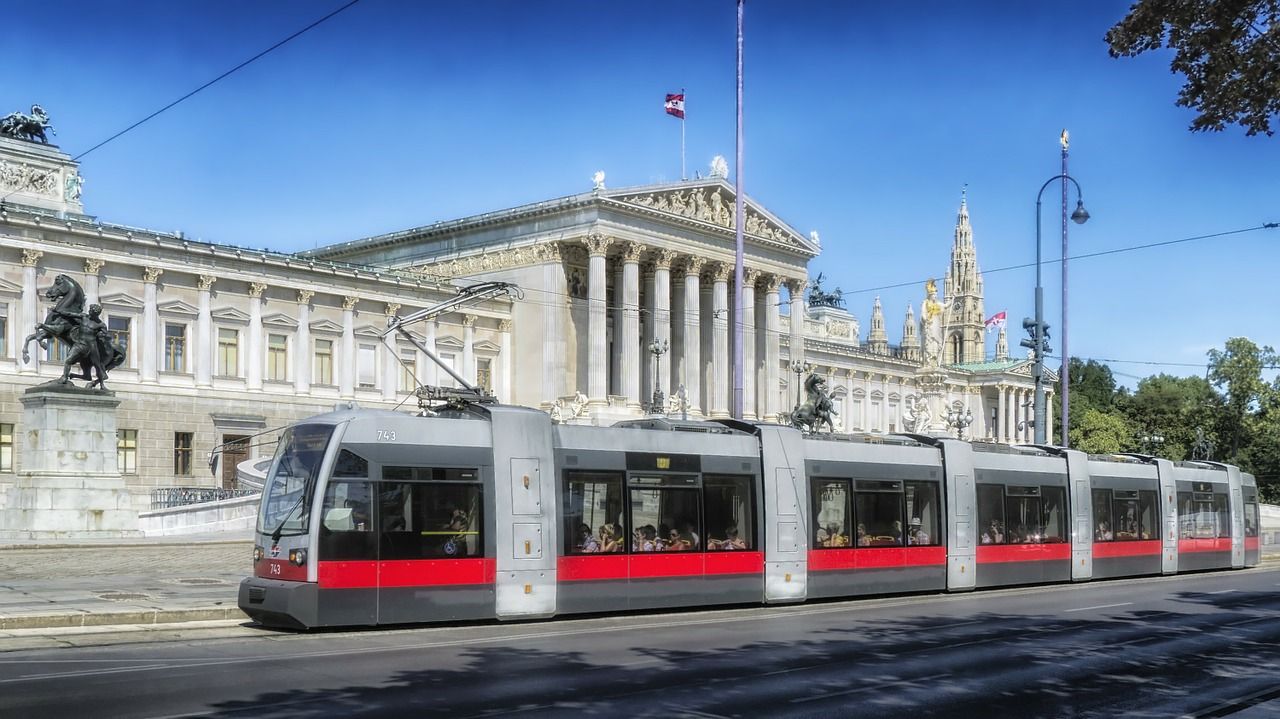What was known as the “tramway” in the 19th century is today colloquially known as the “Bim” or “tram” in Vienna. This is an electrically operated and rail-bound method of public transport.
In Austria, it is called the “Straßenbahn” while in other German-speaking areas, goes by “Trambahn”, “Tramlinie” or even “Tram” for short.

Viennese tram
In the second half of the 19th century, this form of public transport was launched and initially drawn by horses, but soon the horses were replaced by steam power. At the end of the 19th century, the service was finally electrically powered.
Sie sehen gerade einen Platzhalterinhalt von Standard. Um auf den eigentlichen Inhalt zuzugreifen, klicken Sie auf den Button unten. Bitte beachten Sie, dass dabei Daten an Drittanbieter weitergegeben werden.
Mehr InformationenNowadays, Vienna’s city image would not exist without the red and white design of the trams. Many lines are navigated with ULFs – the modern ultra-low floor wagons, which are grey and red. These are especially easy to get on and off. The tram service is operated by the Wiener Linien. With an extensively developed network of 29 lines, you can experience and discover places all over the city.
Facts and figures on the Viennese tram:
- 256 articulated wagons (= in classic tram design)
- 269 ULF articulated wagons
- almost 1,100 tram stops
- specials: tramway rental, Vienna Ring Tram
On a side note: The term “Bim” comes from the jingling sound of the warning bell used to indicate that the trams are setting off or stopping, as well as for a horn during travel.


